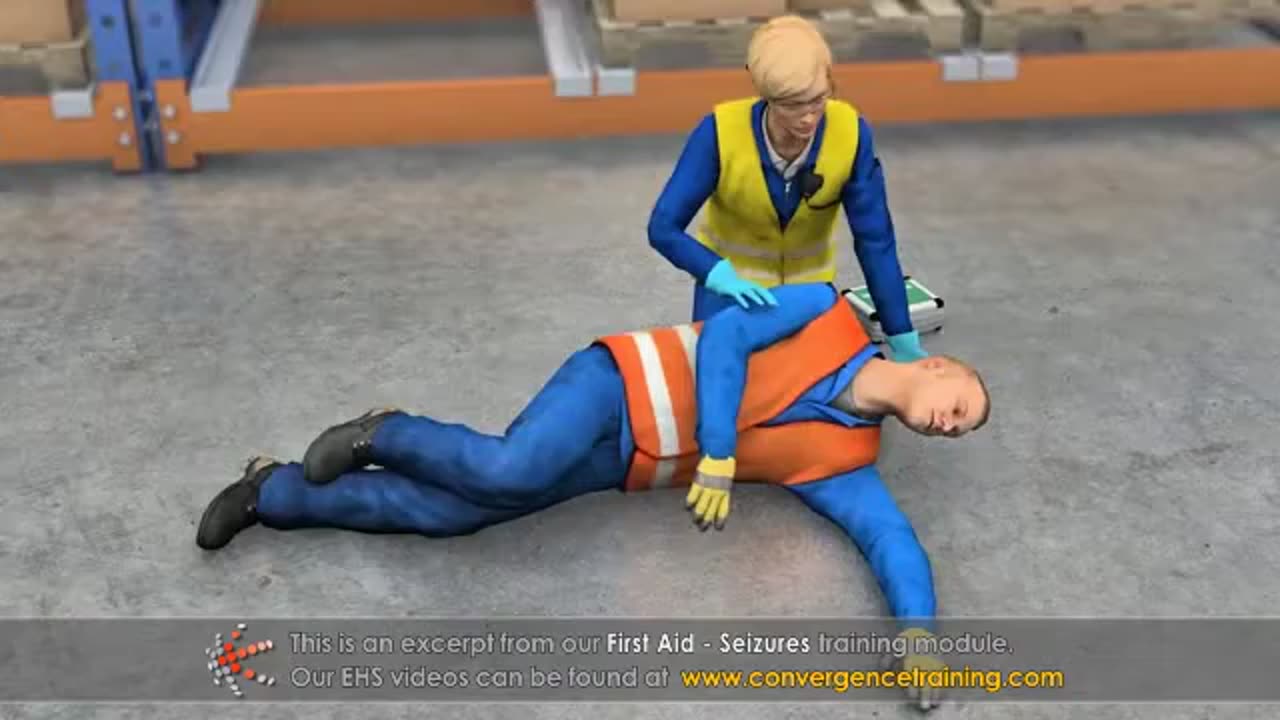Premium Only Content

First Aid - Seizures Training
**First Aid Training for Seizures** equips individuals with the knowledge to provide effective care during and after a seizure episode. Below is a structured guide for training purposes:
---
## **1. Understanding Seizures**
- **What Are Seizures?**
- Sudden, uncontrolled electrical activity in the brain.
- Can cause changes in behavior, movements, sensations, or awareness.
- **Common Causes**:
- Epilepsy (most common cause).
- Fever (febrile seizures in children).
- Head injury, infections, or stroke.
- Low blood sugar, dehydration, or drug use.
- **Types of Seizures**:
- **Generalized Seizures**:
- Affect the entire brain. Example: tonic-clonic (grand mal) seizures.
- **Focal Seizures**:
- Affect one part of the brain, with symptoms localized to one area.
---
## **2. Recognizing Seizures**
### **Tonic-Clonic (Grand Mal) Seizure Symptoms**:
1. Sudden loss of consciousness.
2. Stiffening of the body (tonic phase).
3. Jerking movements (clonic phase).
4. Difficulty breathing or turning blue during the seizure.
5. Post-seizure confusion or fatigue (postictal state).
### **Absence Seizures (Petit Mal)**:
- Brief loss of awareness, often mistaken for daydreaming.
- May involve blinking or lip-smacking.
### **Focal Seizures**:
- Muscle twitching or jerking in one part of the body.
- Unusual sensations or confusion.
---
## **3. Immediate First Aid for Seizures**
### **DO**:
1. **Stay Calm**:
- Seizures are usually not life-threatening.
2. **Protect the Person from Injury**:
- Move objects away from them (furniture, sharp items).
- Cushion their head with a folded item, such as a jacket or towel.
3. **Positioning**:
- Turn the person onto their side (recovery position) to prevent choking.
- Ensure their airway is clear, but **do not force anything into their mouth**.
4. **Time the Seizure**:
- Most seizures last 1–3 minutes.
- Note the time and duration to provide information to medical professionals.
5. **Stay with Them**:
- Offer reassurance as they regain consciousness.
- Keep the area quiet and calm.
---
### **DO NOT**:
- **Put Anything in Their Mouth**:
- It is a myth that people can swallow their tongue.
- Placing objects in the mouth can cause choking or injury.
- **Restrict Movements**:
- Let the seizure run its course; restraining them can cause harm.
- **Perform CPR**:
- Only necessary if they are not breathing after the seizure ends.
---
## **4. When to Call Emergency Services**
Call 911 or local emergency services if:
- The seizure lasts more than **5 minutes**.
- The person has multiple seizures in a row without regaining consciousness.
- It is their **first seizure**.
- They have difficulty breathing or significant injury during the seizure.
- The person has a known condition, such as diabetes or pregnancy.
---
## **5. Post-Seizure Care (Recovery Phase)**
1. **Stay with the Person**:
- They may be confused, drowsy, or emotional after the seizure.
- Offer reassurance and a calm environment.
2. **Check for Injuries**:
- Look for cuts, bruises, or head injuries.
3. **Ensure Safe Recovery**:
- Help them sit up or rest once they are fully conscious.
- Offer water only after they are alert.
4. **Avoid Overstimulation**:
- Keep the area quiet and dimly lit.
5. **Encourage Follow-Up**:
- Suggest they see a healthcare provider if this is their first seizure or if seizures have become more frequent.
---
## **6. Seizures in Specific Situations**
1. **Seizures in Water**:
- Support their head and bring them to safety as soon as possible.
- Check for breathing after the seizure ends.
2. **Seizures While Standing or Walking**:
- Ease the person to the ground to prevent falls.
3. **Febrile Seizures (in Children)**:
- Remove excess clothing and cool the child with a damp cloth.
- Seek medical attention to determine the cause of the fever.
---
## **7. Training Exercises**
1. **Role-Playing Scenarios**:
- Practice responding to a simulated seizure.
- Include different environments (e.g., at home, in public, or at work).
2. **Video Demonstrations**:
- Watch and discuss footage showing proper first aid for seizures.
3. **Timed Drills**:
- Emphasize quick yet calm responses, including timing the seizure and repositioning.
---
## **8. Addressing Myths**
- Myth: "You should restrain someone having a seizure."
- Fact: Restraining increases the risk of injury.
- Myth: "People can swallow their tongue during a seizure."
- Fact: The tongue cannot be swallowed; attempting to "save" it can cause harm.
---
## **9. Summary and Key Points**
- Stay calm and protect the person from harm.
- Do not place anything in their mouth or restrain them.
- Time the seizure and monitor breathing.
- Provide reassurance and care during recovery.
- Call emergency services for prolonged or complicated seizures.
---
Would you like additional materials, such as printable guides, symptom charts, or videos for this training?
-
 6:54
6:54
HSESafetyInformation
10 months ago6 Must Try Breakfast recipes By Food Fusion
421 -
 2:27
2:27
GreenMan Studio
14 hours agoGREENMANS STOCKING STUFFERS 6 – OMEGA’S ELIXIR OF MADNESS
10.4K2 -
 5:32:20
5:32:20
Turning Point Action
23 hours agoLIVE NOW: AMFEST DAY 4 - DONALD TRUMP JR., ERIKA KIRK, TOM HOMAN, VICE PRESIDENT JD VANCE & MORE…
1.1M279 -
 5:41:23
5:41:23
Misfits Mania
5 days ago $917.23 earnedMISFITS MANIA: Fight Night
3.28M -
 12:25
12:25
Actual Justice Warrior
1 day agoSan Francisco Democrats PASS Black Privilege Law
13.7K40 -
 LIVE
LIVE
DynastyXL
3 hours ago🎅 3 Sleeps Till Christmas 🎄🎁 Fortnite with viewers! !join
40 watching -
 52:08
52:08
Man in America
14 hours agoThe Sinister Plan to Crush Small Business — and Put You Under Corporate Rule
79.8K38 -
 1:11:28
1:11:28
Sarah Westall
15 hours agoNewsmax Fired Me on Air! What Gets You Fired These Days w/ Dennis Michael Lynch
56.7K25 -
 54:31
54:31
OFFICIAL Jovan Hutton Pulitzer Rumble
13 hours agoReview Of The Con In Progress!
76.2K21 -
 2:32:35
2:32:35
IsaiahLCarter
1 day ago $10.45 earnedRageaholics Anonymous || APOSTATE RADIO 038 (w/RAZ0RFIST)
54.3K8